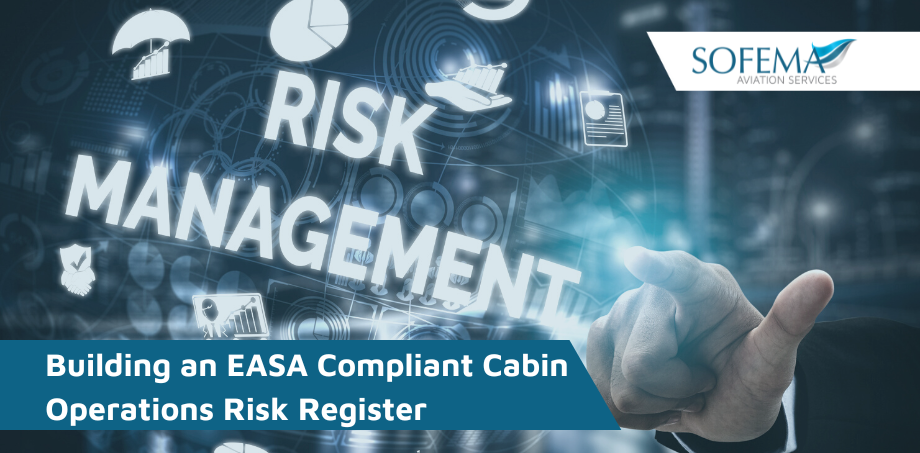Sofema Aviation Services (SAS) www.sassofia.com considers the importance of managing the risks in a systematic and controlled way using a Cabin Operations Risk Register as the Fundamental Tool.
Hazard identification is the foundation of the risk management process in an SMS and may be conducted reactively, proactively, and even predictably. A Hazard is something with the potential to cause harm, and a risk is the potential outcome of a hazard.
What is the difference between a Safety System Hazard Register and a Risk Register?
A hazard register is a source of information from which we can consider the risks, whereas a risk register contains information related to the nature of the risk (clearly a risk register serves a higher purpose).
The Visibility of Hazards
- Visible hazards – Are essentially obvious they can be observed, smelt, heard, tasted, or felt.
- Hidden hazards (Sometimes known as latent hazards) are not so easily understood and can relate to either physical hazards such as electricity or non-physical related to poor training, stress, etc.
An Effective Risk Register Process can support the following SMS Analysis
- ‘Reactive’ risk management (incident investigation.)
- ‘Proactive’ risk management (Used to identify potential risks)
- ‘Predictive’ risk management (supported by Data to identify the area of exposure)
As part of the development of an EASA compliant SMS related to Cabin Operations, the Safety Management System will benefit from the development and continuous monitoring of a Risk Register.
A risk register is a crucial part of your approach to managing these risks. It’s a tool to help you identify, assess, and record your risks and the actions you’re taking to eliminate or minimize them.
For each of the following items perform a risk assessment and ask the questions which help you determine the level of exposure that currently exists in your organisation by asking for each item the following 5 questions:
- Is this an issue in our organisation?
- If it is not considered an issue how can I demonstrate it – where is the evidence?
- How can I measure the effectiveness of the current process?
- How effective is documentation/training?
- If there are changes in this element how effective would the system accommodate the changes?
Examples of Cabin Operations hazards which can be risk assessed for your organization:
- Cabin Fire/Sparks/Smoke/Fumes
- Crew Rest Area Fire/Sparks/Smoke/Fumes
- Cabin Crew Seat
- Cabin Divider
- Cabin Toilet
- Galley & Cabin Service Equipment
- IFE Fire/Sparks/Smoke
- PAX Seat Fire/Sparks/Smoke
- Pax Overhead Lockers & Stowage Bins
- Pax Behaviour Abusive / Assault
- Pax Illness / PAX Fatality
- Pax Intoxication
- Pax Smoking Cabin / Toilet
- Pax Oxygen Masks
- Pax Potential Flight Deck Intrusion
- Passenger Mobile Phone/PED
- Cabin Baggage Passenger
- Cabin Management
- Inadvertent Slide Deployment
- Cabin Crew – Fatigue
- Cabin Crew Stress
- Communication Systems & Interphone
- Cabin Door Procedure
- Communication Systems Passenger Address Ramp/Terminal Management Dangerous Goods
- Emergency Equipment
- Portable Fire Extinguishers
- Safety Equipment
- Toilet Blocked
Next Steps
Follow this link to our Library to find & Download related documents for Free.
Sofema Aviation Services www.sassofia.com and Sofema Online www.sofemaonline.com provide multiple training courses related to Safety Management System Risk and Hazard Training. For additional details visit our websites or email team@sassofia.com
Tags:
Aircraft Cabin, aviation, Aviation Risk, Aviation Safety Management System, Aviation SMS, Cabin Operations, Cabin Operations Risk Register, EASA, EASA compliant, Hazard, Hazard and Risk Identification, Risk Assessment, Risk Register, Safety Management System SMS, SAS blogs




